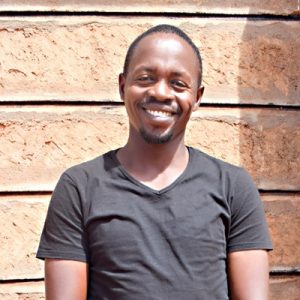This is the second year we have worked with Mitini Community and the Mitini Self-Help Group.
One dam and one well were constructed last year, giving people access to safe water for drinking and a source for irrigating their crops.
However, the dam is still maturing and it alone cannot hold enough the water to support a community like Mitini where more than 10,000 people live. A single well is also not enough to ensure everyone has access to safe water.
"We spend a lot of time at the spring waiting to fetch water especially now that it has not rained for a long while. The sand dam is dry hence making our lives hard," Mrs. Mary Leonard said.
"We enjoyed while it was there but now the water we have is little since the whole community is dependent on it. Our cleaning routines have gone behind compared to how we were trained due to the water scarcity. However, we are trying our best."
As a result, people still turn to open water sources and scoop holes to meet their daily needs. Community members walk long distances to get water that is not safe for consumption, leaving them vulnerable to waterborne diseases.
So we plan to construct another well and dam to ensure that more people have safe water nearby.
This self-help group is in the second year of our five-year development program. They were trained during the construction of their first successful sand dam, and have grown immensely since then.
Go here to view previous projects in the community and see their progress over the past few years.
Due to the water scarcity, latrines in the community are cleaned irregularly. Most of them are not keen on keeping their latrines clean as they view it as a waste of water considering the time and energy they consume while fetching water from the spring. However, some of them have tippy taps with water to wash their hands after using the latrines.
The good news is that most people are applying the lessons they learned from their first hygiene and sanitation training.
Subsistence agriculture is the main source of livelihood for this community. When the rainfall pattern is better, the members harvest enough both for their families and to sell at the local market to earn money for other needs.
What we plan to do about it:
Our main entry point into Mitini Community has been the Mitini Self-Help Group, which is comprised of farming households that are working together to address water and food scarcity in their region. These members will be our hands and feet in both constructing water projects and spreading the message of good hygiene and sanitation to everyone.
Training
We’re going to train the self-help group members and their communities on hygiene and sanitation practices. No more than half of the households in this area even have a basic pit latrine. Since getting water is such a tough, time-consuming task, many people view cleaning as a waste of water.
Some of the members have really made a strong effort to implement what they were taught by their trainers, such as having handwashing stations, latrines, kitchen racks, and clotheslines. However, they need more training on water treatment. According to the statistics recorded, out of the 36 members, only two boil their water. Ten others use WaterGuard and the rest do not apply any water treatment mechanism.
Sand Dam
Building this sand dam at a spot further down the river in Mitini will bring water closer to hundreds of other people. After the community picked the spot, our technical team went in and proved the viability by finding a good foundation of bedrock. Now, our engineers are busy drawing up the blueprints. We estimate the dam will be 39.6 meters long and 4.15 meters high.
We are unified with this community to address the water shortage. As more sand dams are built, the environment will continue to transform. As the sand dams mature and build up more sand, the water tables will rise. Along with these sand dams, hand-dug wells (check out the hand-dug well being installed next to this dam) will be installed to give locals a good, safe way to access that water.
With these projects, clean water will be brought closer to people in Mitini Community.

 Sand Dam
Sand Dam
 Rehabilitation Project
Rehabilitation Project



























